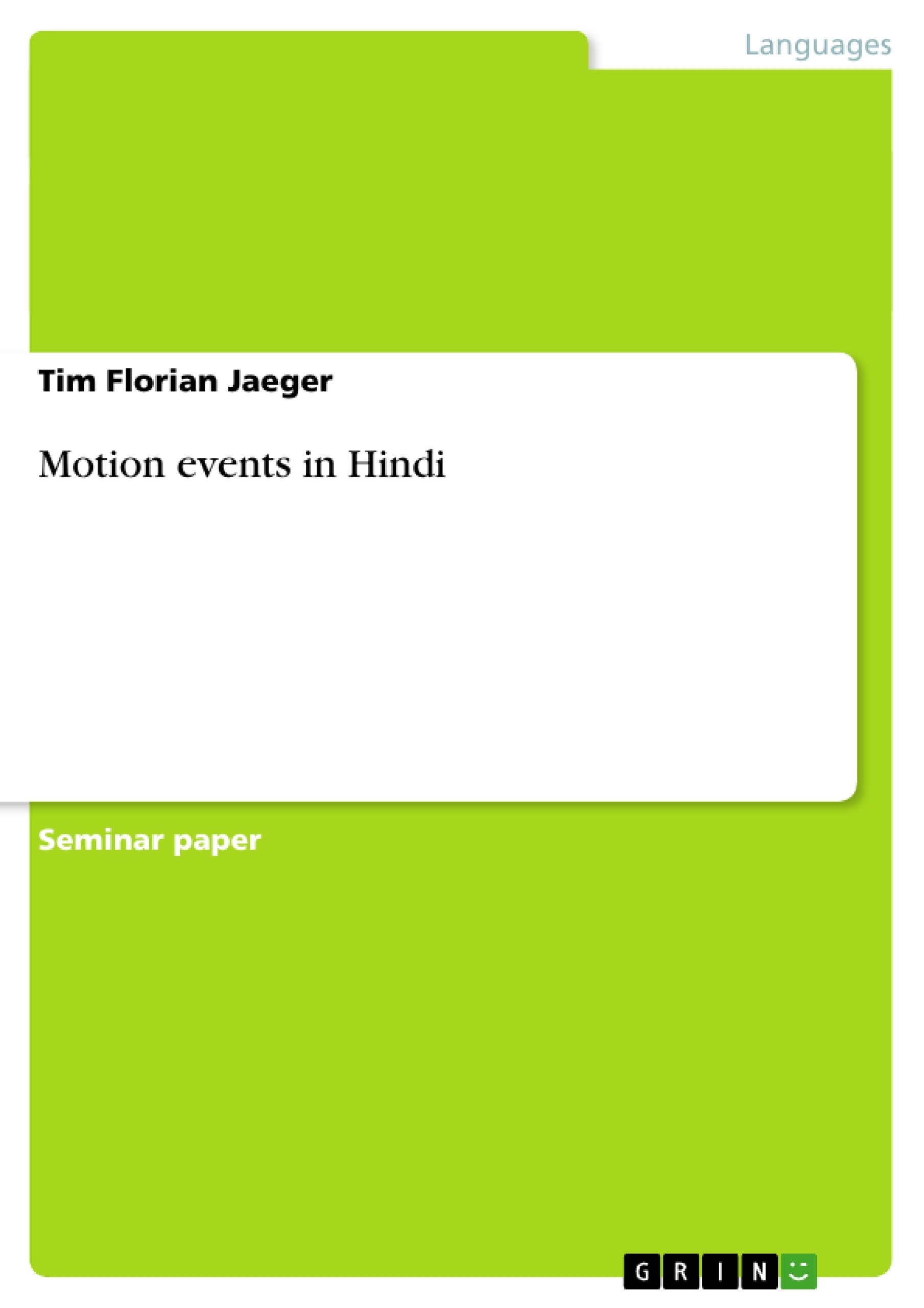This squib provides a short introduction into Hindi syntax, as far as it seems to be relevant for the grammaticalization of motion events in Hindi, and a summary of the most striking facts about the way Hindi grammaticalizes motion events. Within Talmy's (1985) terminology, Hindi probably is one of the clearer cases of a PATH language. Except for some (supposedly frequently used) MANNER encoding verbs like e.g. 'run', the notion of PATH can only be evoked by PATH-verbs. The set of MANNER-verbs that are compatible with the notion of PATH seems to only contain MANNER-verbs that can be observed to be compatible with a PATH interpretation in other (PATH)-languages (cf. Eve Clark, p.c.).
Inhaltsverzeichnis (Table of Contents)
- A Introduction
- B Hindi Syntax – some facts*
- C First comparison with English
- D Stanford Hindi
- E Manner encoding secondary predicates
- F The postpositions and case markers
- G Summary and additional facts
Zielsetzung und Themenschwerpunkte (Objectives and Key Themes)
This squib aims to provide a brief introduction to Hindi syntax and its role in the grammaticalization of motion events. The text examines the ways in which Hindi encodes motion events, particularly in comparison to English, and highlights the role of PATH and MANNER verbs in conveying movement.
- The grammaticalization of motion events in Hindi
- Comparison of motion encoding in Hindi and English
- The role of PATH and MANNER verbs in Hindi
- The use of postpositions and case markers in Hindi
- The relationship between motion verbs and directional expressions
Zusammenfassung der Kapitel (Chapter Summaries)
- A Introduction: This chapter introduces the topic of motion events in Hindi and establishes the framework for analyzing Hindi syntax in relation to motion verbs. The chapter highlights Hindi's classification as a PATH language, meaning that the notion of PATH is primarily expressed through verbs.
- B Hindi Syntax – some facts*: This chapter provides a brief overview of Hindi syntax, focusing on case marking, postpositions, and word order. It introduces the concept of split ergativity and discusses the functions of various case markers and postpositions.
- C First comparison with English: This chapter compares Hindi and English motion verbs, highlighting the different ways in which these languages express motion events. It presents examples to demonstrate how Hindi verbs, unlike their English counterparts, tend to encode PATH rather than MANNER.
- D Stanford Hindi: This chapter examines further data from Hindi speakers to explore the encoding of PATH and MANNER in motion events. It delves into the interplay between verbs, postpositions, and case markers, illustrating the different ways in which directed and non-directed motion can be expressed.
- E Manner encoding secondary predicates: This chapter focuses on the use of secondary predicates in Hindi, particularly in relation to MANNER verbs. It examines the various forms that can be used to express MANNER and explores the semantic nuances of each form.
- F The postpositions and case markers: This chapter analyzes the role of postpositions and case markers in Hindi, particularly in relation to motion verbs. It discusses the functions of various postpositions and case markers, including their use in expressing directionality and location.
Schlüsselwörter (Keywords)
This study focuses on the grammaticalization of motion events in Hindi, particularly the roles of PATH and MANNER verbs, case marking, postpositions, and the encoding of directionality and location. It compares Hindi motion events with English counterparts and examines the flexibility of Hindi verbs in combination with PATH-PPs or PATH-NP-cases.
- Quote paper
- Tim Florian Jaeger (Author), 2002, Motion events in Hindi, Munich, GRIN Verlag, https://www.hausarbeiten.de/document/45473


